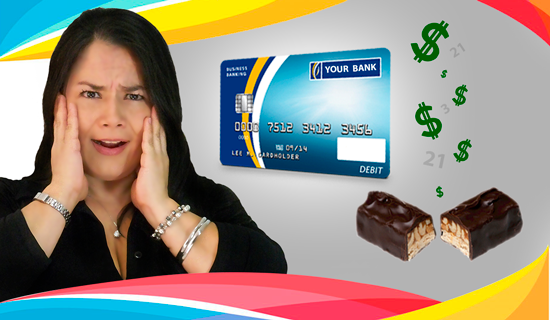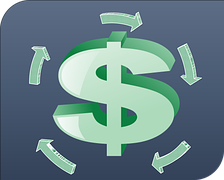How a $3 Candy Bar Could End Up Costing You $21!!

You just stopped in a store and purchased a $3 candy bar, but ended up paying $21!!
HOW DOES THAT HAPPEN?
If you are a Chase Bank customer, you may be paying $3 monthly fees on debit cards and $15 fees on checking accounts. If that candy bar is the only thing you buy with your debit card that month, it could cost you $21.
Why are banks charging more fees on debit cards? And, whatever happened to “free” checking?
 The additional changes are because banks have lost huge chunks of their revenue – billions of dollars annually from dramatically reduced interchange fees (fees retailers pay to banks for each debit card transaction) and billions more in losses from the changes in laws regulating bank credit cards, in addition to the cost of collection for unpaid credit card debt, you can see why banks are doing everything possible to recoup lost revenues.
The additional changes are because banks have lost huge chunks of their revenue – billions of dollars annually from dramatically reduced interchange fees (fees retailers pay to banks for each debit card transaction) and billions more in losses from the changes in laws regulating bank credit cards, in addition to the cost of collection for unpaid credit card debt, you can see why banks are doing everything possible to recoup lost revenues.
Banks are making up that shortfall in revenue by charging you for previously free services.
Here are a few ways banks are hoping to profit more from you, the consumer:
- Charging $25-$30 annual fees on debit cards
- No more debit card rewards
- Charging higher withdrawal fees at their ATMs to non-customers
- Capping the number and/or size of the transactions you make on your debit card
- Charging $6.00 or more for cashing one of their own checks presented by a non-customer
Banks already offer fewer “free” checking accounts, and those may disappear altogether.
You may see new “fees” showing up on your checking account as banks offer you less interest on those accounts. You may have to pay extra to receive a paper statement of your checking account. Some banks have accounts that charge additional monthly fees if customers don’t use ATMs or the Web for banking.
Banks used to waive checking fees if you made direct deposits totaling at least $500 monthly, but J.P. Morgan, for example, now requires customers to make at least one direct deposit of $500 to waive a monthly fee. Some banks are requiring you keep a minimum daily balance of $1,500 in order to receive free checking, while other banks are charging $2 for each written check.
Banks claim that the more customers use their services, the more opportunities will exist to lower or waive fees. But what that really means is that these new fees will squeeze low-income customers out of traditional banking, leaving them no alternative but to use high-fee alternatives like check cashers and payday lenders.
 The best solution seems to be online banking.
The best solution seems to be online banking.
Some banks still offer truly free checking, but consumers need to read all statements closely regarding annual fees, variable interest rates, purchase grace periods, and late fees. While online banks tend to charge lower fees, pay higher interest, and sometimes refund fees other banks charge to use their ATMs, they often lack the convenience of a quick transaction or paper checks.
So be mindful of all fees as well as the financing structure of your debit cards. This way you won’t get caught unaware and end up spending $21 for that $3 candy bar!



 Login
Login






